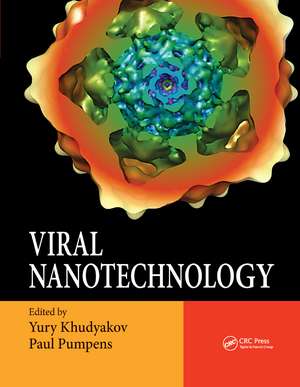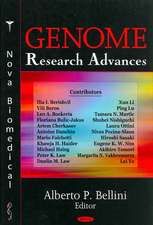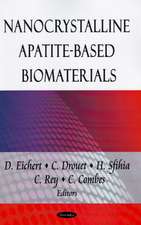Viral Nanotechnology
Editat de Yury Khudyakov, Paul Pumpensen Limba Engleză Paperback – 30 mar 2021
The field of viral nanotechnology is new and quickly expanding due to increasing demand of the applications already developed. The editors identify viral nanotechnology as a significant science that concerns itself with how to use the molecular modules that the distinctly different science of molecular engineering only constructs. The current potential applications of viral technology are manifold, with opportunities to revolutionize practices in photonics, catalysis, electronics, energy, biomedicine, health care, and public health.
This book emphasizes using viral nanotechnology to improve health. A special emphasis is placed upon using viral nanotechnology for developing vaccines. In addition, it documents viral nanotechnology’s use as a powerful tool for developing drugs and genetic therapies. There is also great potential in its use as a means for diagnostics, including the development of diagnostic reagents and novel imaging technologies for detecting disease and infectious agents.
Viral nanotechnology’s rapid and exciting growth is due to the need for new tools in the prevention, diagnosis, and treatment of disease. The contributors to this volume approach each chapter with the hope that their research and practices will contribute to an improvement in health and life on an unprecedented scale in human history.
| Toate formatele și edițiile | Preț | Express |
|---|---|---|
| Paperback (1) | 323.16 lei 6-8 săpt. | |
| CRC Press – 30 mar 2021 | 323.16 lei 6-8 săpt. | |
| Hardback (1) | 1068.26 lei 6-8 săpt. | |
| CRC Press – 23 iun 2015 | 1068.26 lei 6-8 săpt. |
Preț: 323.16 lei
Preț vechi: 377.12 lei
-14% Nou
Puncte Express: 485
Preț estimativ în valută:
61.84€ • 67.15$ • 51.95£
61.84€ • 67.15$ • 51.95£
Carte tipărită la comandă
Livrare economică 22 aprilie-06 mai
Preluare comenzi: 021 569.72.76
Specificații
ISBN-13: 9780367658779
ISBN-10: 0367658771
Pagini: 524
Dimensiuni: 210 x 280 mm
Greutate: 0.97 kg
Ediția:1
Editura: CRC Press
Colecția CRC Press
ISBN-10: 0367658771
Pagini: 524
Dimensiuni: 210 x 280 mm
Greutate: 0.97 kg
Ediția:1
Editura: CRC Press
Colecția CRC Press
Cuprins
Preface. Editors. Contributors. Introduction. Introduction to Capsid Architecture. Self-Assembling Virus-like and Virus-Unlike Particles. Electron Cryomicroscopy and Image Reconstruction of Viral Nanoparticles. X-Ray Analysis of Viral Nanoparticles. Computational Methods for Engineering Protein 3D Nanoobjects. Viral Nanoparticles: Principles of Construction and Characterization. Immunology of Virus-like Particles. Nanomedicine: General Considerations and Examples. Virus-like Particles: A Versatile Tool for Basic and Applied Research on Emerging and Reemerging Viruses. Virus-like Particles Derived from Hepatitis Viruses. History and Potential of Hepatitis B Virus Core as a VLP Vaccine Platform. SplitCore: Advanced Nanoparticulate Molecular Presentation Platform Based on the Hepatitis B Virus Capsid. Use of VLPs in the Design of Malaria Vaccines. Use of HBcAg as an Adjuvant in DNA-Based Vaccines: An Unexpected Journey. Bacteriophage Virus-like Particles as a Platform for Vaccine Discovery. Production of Virus-like Particles in Plants. Bionanomaterials from Plant Viruses. Assembly of Bluetongue Virus-like Particle: Multiprotein Complex and Its Use as Vaccine. Virus-like Particles Based on Polyomaviruses and Human Papillomaviruses as Vectors for Vaccines, Preventive and Therapeutic Immunotherapy, and Gene Delivery. Applications of Viral Nanoparticles Based on Polyomavirus and Papillomavirus Structures. Nanoparticles of Norovirus. Virus-like Particle Enzyme Encapsulation: Confined Catalysts and Metabolic Materials. Principles of Design of Virus Nanoparticles for Imaging Application. Enveloped Viruses with Single-Stranded Negative RNA Genome as Objects and Subjects of VLP Nanotechnology. Traditional and Novel Trends in Influenza Vaccines. Retrovirus-Derived Virus-like Particles. Cancer Therapy Applying Viral Nanoparticles. Alphaviral Vectors for Cancer Treatment. Synthetic Virus-like Particles in Vaccine Design. Index.
Notă biografică
Yury Khudyakov, PhD, received his MS in genetics from Novosibirsk State University and his PhD in molecular biology from the D.I. Ivanovsky Institute of Virology, Academy of Medical Sciences in Russia. He is chief of the Molecular Epidemiology and Bioinformatics Laboratory, Division of Viral Hepatitis, Centers for Disease Control and Prevention, Atlanta, Georgia. He has published more than 170 research papers and book chapters, is an author of several issued and pending patents, and is a member of the editorial board for the Journal of Clinical Virology and academic editor for PlosOne.
Paul Pumpens graduated from the Chemical Department of the University of Latvia in 1970, received his PhD in molecular biology from the Latvian Academy of Sciences in Riga, and received his DSc from the Institute of Molecular Biology of the USSR Academy of Sciences in Moscow. He pioneered genetic engineering research in Latvia and was one of the first in the world to successfully clone the hepatitis B virus genome. He is an author of more than 300 scientific papers and issued or pending patents.
Paul Pumpens graduated from the Chemical Department of the University of Latvia in 1970, received his PhD in molecular biology from the Latvian Academy of Sciences in Riga, and received his DSc from the Institute of Molecular Biology of the USSR Academy of Sciences in Moscow. He pioneered genetic engineering research in Latvia and was one of the first in the world to successfully clone the hepatitis B virus genome. He is an author of more than 300 scientific papers and issued or pending patents.
Recenzii
"Viral Nanotechnology is a 'must' for health and science holdings at the advanced college level."
—Midwest Book Review
—Midwest Book Review
Descriere
This book presents a review of a rapidly developing field of viral nanotechnology in the context of immunology, virology, microbiology, chemistry, physics, and mathematical modeling. Viral nanotechnology is founded on the unexpected properties of viral nanoparticles. It emphasizes applications of viral nanotechnology to improving health and adva













